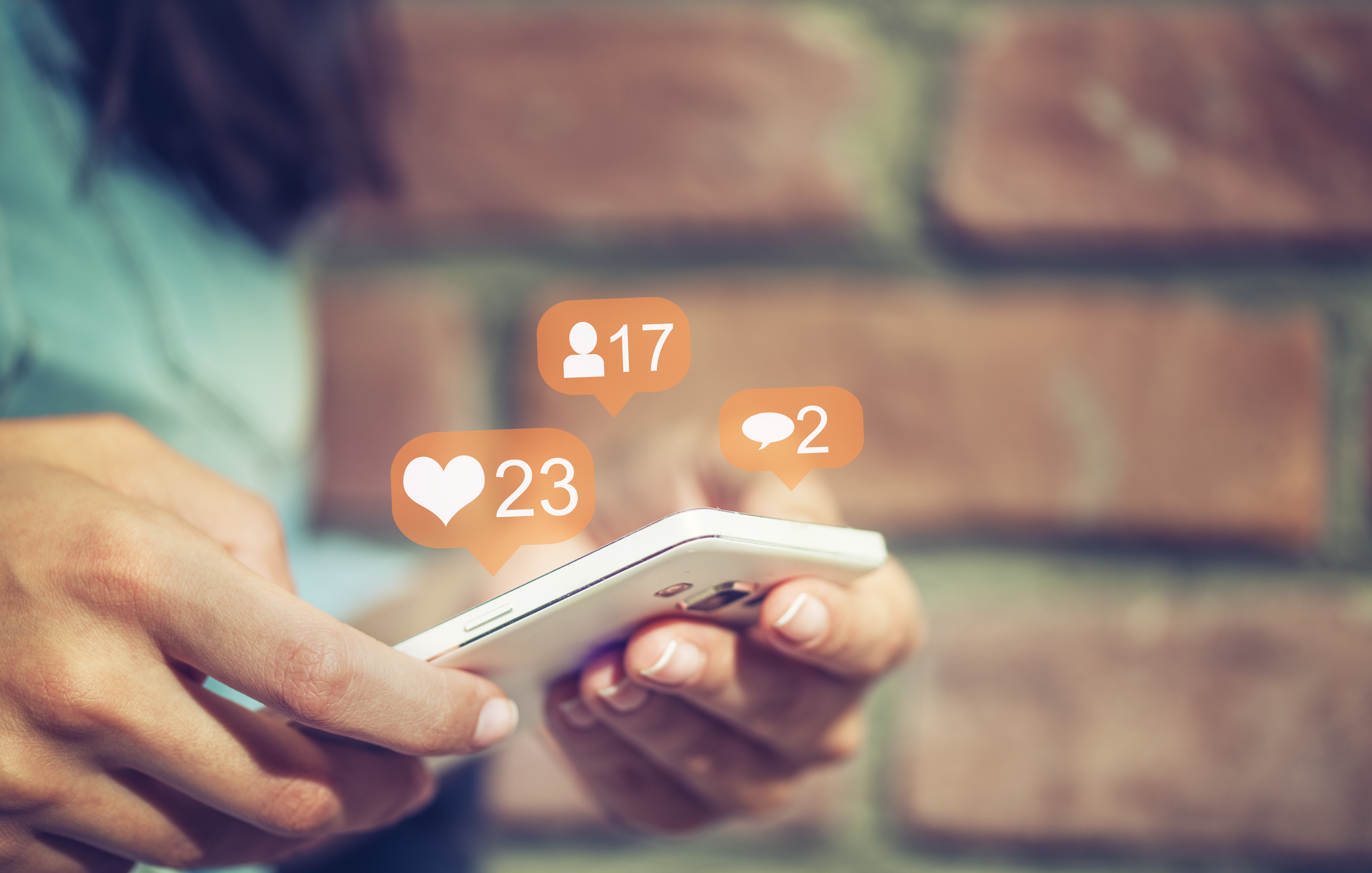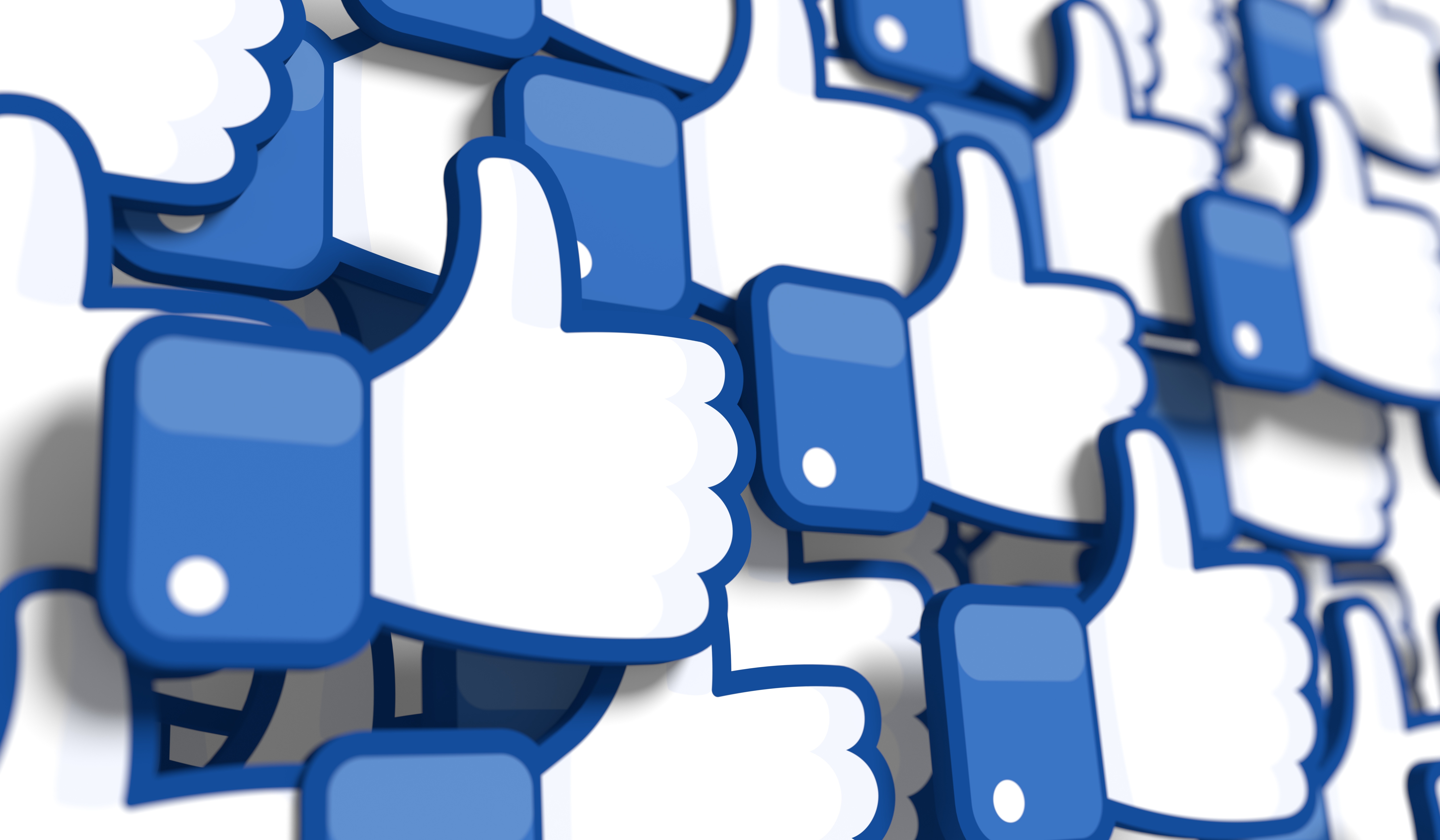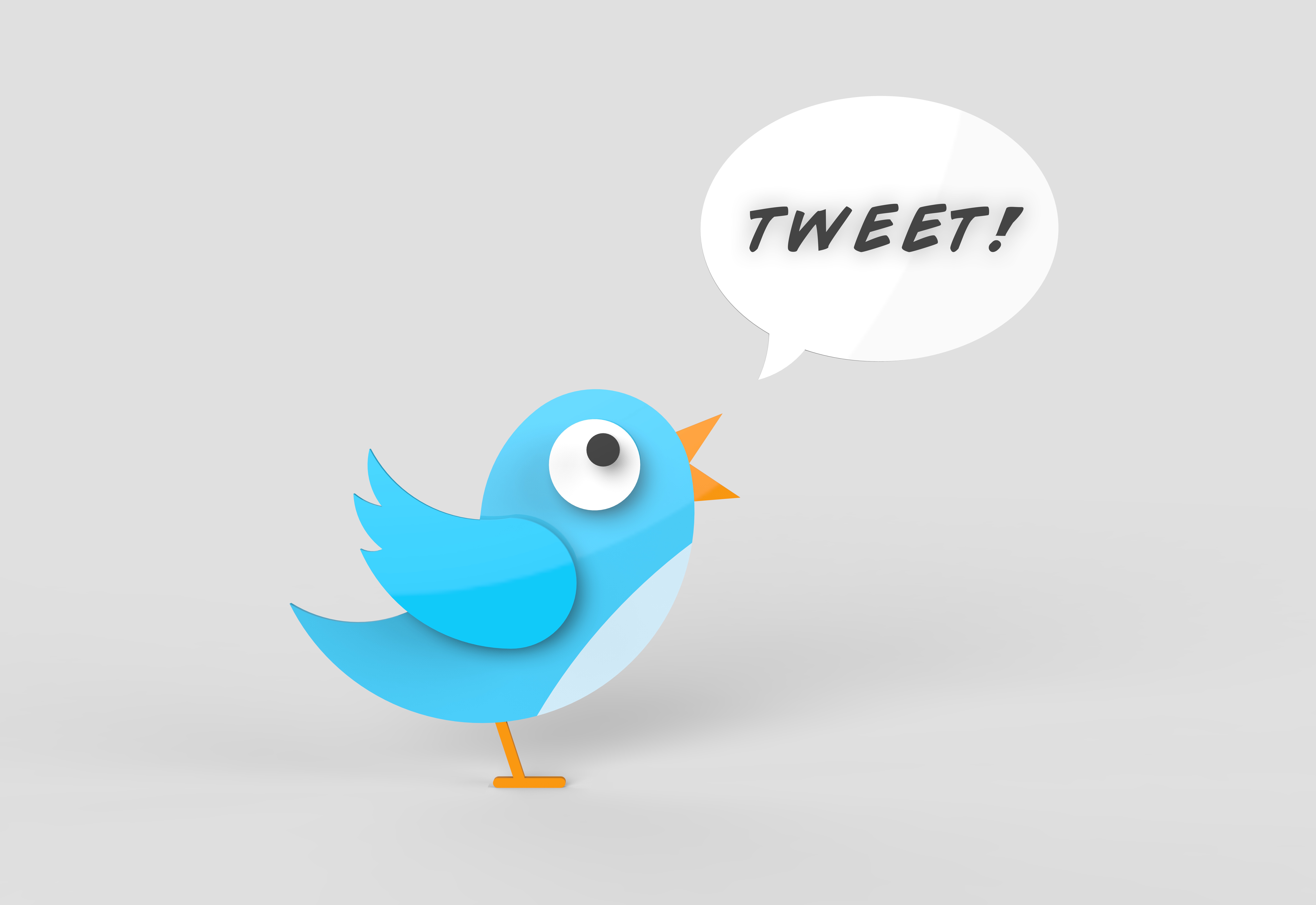Social media is the most effective marketing tool of the last century, providing levels of discovery and reach never before seen in the history of mankind. Are you still using just the written language to interact with your users?
Is this the year 2600 BC and are you a Sumerian developing cuneiform?
No? Then make video!
Video is driving purchase behavior, creating stronger customer engagement, developing trust in your brand and setting you apart from the crowd. Video alone doesn’t increase trust. Video that resonates is what matters. And it’s never been easier or cheaper to shoot and produce video with better, easier to use tools.
But where do you publish them? Well, that depends.
To clear up the confusion, we’ve created a one-stop-shop for you to explore and understand the major video marketing platforms, including: usability, functionality, pros and cons, and tips to give you the jump over your competition.
Originally a photo sharing application, Instagram has been overhauled to support videos, stream live video, post 24 hour temporary content via “stories”, turn stories into highlights on your page and direct video messages which are so popular they originated the term “hit me in my DM’s”. As of September 2017, the app has 800 million users worldwide with the Instagram stories functionality supporting over 250 million active users.
Instagram was launched in October 2010 and acquired by Facebook in April 2012 for approximately $1,000,000,000 in cash and stock.
Usability
Instagram has many defining features and almost all were taken directly from their biggest rival SnapChat, then implemented in a bigger, better way. The app allows users to add digital filters to their images, a practice which was adopted rapidly with Snapchat. Now “edits” are a popular genre and seeing an entire page with a color or theme is common. Instagram even allows augmented reality overlays on videos and updates the options regularly based on locations and events.
Instagram users can also leverage hashtags to identify their content. That, combined with the discover tab and suggestions, allows for an incredible rate of content discovery, making marketing easier. It’s also seen as the major reason Instagram is outperforming Snapchat. (And thanks to Facebook algorithms, Instagram’s content suggestions are well targeted.)
So remember marketers: hashtag hashtag hashtag! The new algorithm likes to see new hashtags, so don't just copy and paste from a list like you used to do, use whatever is most relevant for the content posted.
Instagram videos were launched in 2013 with a 15-second maximum duration and very limited file size, leading to lower quality. Thankfully, Instagram later added support for 60 second widescreen videos.
Audience and Marketability
- 25+ million business profiles worldwide.
- 2+ million advertisers worldwide use Instagram to share their stories.
- 60% of people say they discover new products on Instagram.
- 200+ million Instagrammers visit at least one business profile daily.
- 80% increase in time users spent watching video on Instagram.
- One third of the most viewed stories are from businesses.
Pros
As a platform, Instagram has really great discoverability if you the right hashtags. Interacting with your audience will also help you to show up in suggested feeds and gets discovered by more people. The adverts on Instagram are not shown to often or intrusively which leads to a better UX. 60% of users log in daily, while engagement with companies is 10 times higher than Facebook and one third of users have used their smartphone to purchase a product online.
The average person on Instagram is more likely to purchase than almost any other platform, so use it’s heavy reliance on vibrant visuals to your advantage. Instagram stories now can last longer than 24 hours if you “Highlight” them, by saving them on a new tab on your profile that (when optimized) can be a great resource for your potential buyers.
Cons
About 90 percent of active users are under age 30. So, if your buyer personas are older, this is not the platform for you. If your company offers services which aren’t visual, then this platform is again not going to be very effective. Finally, engagement numbers are inflated because a video's view is counted after only three seconds– three seconds! How much information has been transferred in that amount of time? How much are those three seconds worth? This is a serious problem, as you really can't say you have engaged the person if they have only watched for three to four seconds. So be careful when identifying the worth of a view, as an actual interaction is far more valuable. The vast majority of people stop watching a video after about 10 seconds, so this should be the minimum value and you should look at the amount of people who have watched to the end to identify how many people are actually interested. And since Instagram steals most of their ideas from Snapchat, but probably implements them better, they’re sort of like Apple if Snapchat is Android.
Final Verdict
Instagram videos are well worth your time, if you keep them short and as visually appealing as possible. Plan to make Instagram stories no longer than 15 seconds (you can chain them together but it won't look fluid), and videos no longer than a minute. Content on Instagram has a shelf life, so post often as the algorithm will bury your content in just a few days.
Viewers have to tap to enable sound, so consider adding captions and don't make the video too wordy. Just think, “Will people understand my videos if there is no sound?” And of course, if you aren't having fun making the video, people won’t have fun watching it. That actually applies to all platforms, so have fun!
Snapchat
Snapchat is an image messaging application launched in 2011. It was founded on the notion that pictures and messages should only be available for a short amount of time. Therefore, there would be no need to alter the image or message as there would be no record of it.
“Snapchat isn’t about capturing the traditional Kodak moment. It’s about communicating with the full range of human emotion — not just what appears to be pretty or perfect.”
Usability
The Snapchat app has greatly evolved to become the leader of innovative technology that influences the rest of the industry. It has moved its focus from person-to-person interactions to featuring “stories” with content available for 24 hours. Sound familiar? This, along with a "discover" feature that lets brands show ad-supported short-form entertainment, have both been adopted by Instagram.
Snapchat users also interact with virtual stickers, augmented reality objects and face mask filters for their videos.
Audience and Marketability
- Snapchat has 178 million daily active users, and 300+ million monthly active users
- Snapchatters watch 10 billion videos a day
- Average time spent per user on Snapchat per day: 30+ minutes
- Snapchat demographics: 71% of Snapchat users are under 34 years old and 45% are ages 18-24
- Roughly 70% of Snapchat users are female
- People under the age of 25 use Snapchat for 40 minutes per day, surpassing Instagram’s latest statistic for same demographic
Pros:
This is a great platform for person-person interaction, so get people to add you and build strong brand relationships with your followers. Change the way you would usually market yourself by opting to show your company behind the scenes, instead of showing your products or services.
Share fun clips, promote your culture and showcase your staff. This doesn't necessarily need to be a ROI generator, but could help your brand awareness. Think Elon Musk and his flamethrower: fun, quirky and engaging. As a general rule, if you have fun making the content, people will have fun watching it.
Remember: 70% of snapchat users are female, so if you want to target under 30 females, this could be the platform for you. Plus, according to Snapchat, people under 25 spend more time here than on Instagram.
Cons
Snapchat has a built in weakness, like the thermal exhaust port on the Death Star. There is no content archive on Snapchat, whereas every other major platform has a place where you can curate your content. This gives people a reason to visit your profile page and an opportunity to offer conversion paths. But, unless you post very regularly, and at least every 24 hours to your story, there will be nothing for people to see.
Let's not beat around the bush, Snapchat originally had a bad reputation for being a place to share disappearing pictures that you otherwise wouldn't send. While today that may have changed, their will be some that still think of it in this way.
The discover feature is lack luster and the ads aren’t targeted. In fact, most people joke about the feature by saying, “Have you ever been so bored you went on the discover tab?” This key feature is nowhere near as powerful as Instagram’s version and actually hinders growth and marketability.
Final Verdict
This shouldn't be your main video marketing source, but reposting and repurposing content here is just fine. Post often (as videos are deleted after watching or after 24 hours) and the video should be developed so the person viewing it feels like it was made for them. Think Bob Ross, the internet's favorite painter, who set out to make every episode feel like a one-on-one painting class. You can film stories for one minute but it will still be cut up into ten second chunks. Videos can also be looped like Vines, so experiment and be original.
YouTube
YouTube is a video-sharing website created in 2005 and sold to Google in 2006 for $1.65 billion. Essentially, YouTube allows users to upload an unlimited amount of videos, rate, share, comment on them, create a channel to host their videos and subscribe to the channels of other users. It’s now the world's biggest video sharing platform, the second most used search engine and the second most used website in the world (according to Alexa, which provides commercial web traffic data and analytics).
Usability
YouTube earns advertising revenue from Google’s AdSense, which uses algorithms that target ads according to site content and audience. This allows users who contribute to the growth and development of the platform to profit as well, one of the leading factors for YouTube’s growth and the quality of its content.
YouTube is home to every type of video imaginable: music videos, documentaries, movie trailers, live streams, video blogs or vlogs, educational videos and everything in between. Thanks to YouTube videos, I was able to restore a 1966 Ford Mustang, where even the most minute detail had an instructional video made by a passionate YouTuber.
Audience and Marketability
- YouTube has +1 billion users, that’s one-third of all people on the Internet. Each day, those users watch a billion hours of video, generating billions of views.
- YouTube on mobile reaches more 18-34 and 18-49 year-olds than any cable network in the US.
- Among millennials, YouTube accounts for two-thirds of the premium online video watch across devices.
- +50% of YouTube views are on mobile devices.
- YouTube has launched local versions of it’s app in more than 88 countries.
- You can navigate YouTube in a total of 76 different languages (covering 95% of the Internet population).
Pros
The most important thing to video marketers is the engagement them on your video and Youtube has one of the longest average watch times of any video platforms. Unlike their competitors, none of their videos autoplay in the background with no sound just to inflate their view numbers *looking at you, FaceBook*. This makes each view more valuable as people are much more invested, and you have more time with your buyer personas to impart the value of the content you have worked so hard on.
YouTube content also lasts far longer than any other platform. Your videos will continue to gather views for weeks and months after you post them, thanks to YouTube's algorithms and the next up and suggested video features. Leverage the power of YouTube’s longevity by making evergreen content that will stay valuable for weeks, months or even years after posting.
People on YouTube are likely to visit your channel and binge watch your videos like Netflix if they see one that they like. If you have a series of videos, create playlists with thumbnails that clearly express the message within and stand out.
Cons
No site is immune to controversial figures or problematic groups and YouTube is no different. There has been much talk recently about adverts playing over disturbing content, which is one of the only ways to advertise to their audience. Your marketing isn't placed in someone’s feed, but instead, plays before and during uploaded videos (with banners being the other placements). Therefore the content of the video could stand at odds with your brand and beliefs.
Youtube is too large to be monitored and moderated by real people, but the good news is these problems are found and fixed quickly by an algorithm that’s constantly learning and adapting. Huge disincentives are also placed on people who make controversial videos. But if you’re still worried, you can specify what content you would like to avoid. However, no platform is perfect and this is a relatively small grievance.
Final Verdict
YouTube should be considered for any branded video content. The watch times are longer and more valuable as the customer is more engaged. The content will also be relevant longer as it will continue to gather views instead of being deleted after viewing or hidden in people's feeds.
Engage your audience fast by directly stating the value of the video and immediately delivering. Don't use clickbait, as your video will be downvoted and the bounce rate you generate will keep your video from being seen. When advertising on YouTube using paid placements, most people will have the option to skip your advert after five seconds, so every second counts. Give them a reason to keep watching!
Facebook is an online social media channel launched in 2004 and quickly became the world's largest social media platform. Today, it accounts for the a huge chunk of worldwide data usage and overall time spent online.
Usability
Users can sign up for accounts that display their name, occupation, likes, age, location, education and even more information which is useful to marketers. Users can add friends, message, post to their page or others, share pictures, share videos and links, join groups and more, all of which notify other users and drive returning traffic.
Facebook’s advertising platform is an incredibly powerful tool for video marketers, thanks in part to data mining information from profile pages (allowing advertisers to target based on behaviours and interests) combined with incomprehensibly complex algorithms which show extremely relevant adverts to just the right people at just the right time. In fact, they’re so accurate that some people think Facebook listens to their conversations and shows advertising based on conversational keywords.
The platform generated $40.7 billion in revenue for 2017, and even though it typically uses the interruptive advertising method, it can drive better ROI than Google AdWords which uses the typically less effective intent-based advertising, a testament to Facebook’s effectiveness.
Audience and Marketability
- 2 billion monthly active users
- +1 billion daily active users
- Users access Facebook an average of eight times per day, spending an average of 35 Minutes on Facebook Each Day
- 89% Of Facebook Ad Revenue Is From Mobile
- Facebook Live Videos Are Watched 3x Longer Than Regular Videos
- 74% Of Total Ad Recall Is Achieved In 10 Seconds Of Facebook Video Campaigns
- Facebook seems to be the best option for reaching older users on social media when compared to other networks.
Pros
Facebook has a much larger market share of the older demographics, so if your buyer personas are age 50+, your marketing strategy should absolutely include Facebook video. It’s one of the only places that has enough quantity to make such a campaign worthwhile.
The amount of data people make available to Facebook is also unrivalled. The platform leverages this in their targeting, making theirs one of the most focused tools available. The amount of customizability you have is the difference between surgery with a mace or a scalpel. Precision, optimization and response are key features of marketing, all of which Facebook does almost better than anyone.
Facebook is also relatively cheap, just make sure you have clearly targeted your buyer personas and run A/B testing between platforms to see which offers better ROI.
Cons
Don't be fooled by the big numbers, a view is logged when a video plays for at least three seconds. So your 1000 Facebook views may only be worth 1 hour and 57 minutes of watch time (accounting for 7 seconds average watch time per person) while 1000 Youtube views can be worth 33 hours and 20 minutes (accounting for 2 min average watch time). Look closely at your metrics and conversions to figure out what’s working best for you.
On desktop, a video has to be 100 percent on the screen before it starts auto playing. On mobile, it has to be at least 50 percent on the screen. Almost 9-in-10 Facebook videos are consumed without sound, very Charlie Chaplin circa 1918 of you Facebook. Worst case scenario, Facebook is counting a view if the video is half on screen with no sound for 3 seconds. Yes, really. And you can be charged for that, depending on your settings!
Facebook has also received scrutiny over privacy and the psychological effects it has on users. Just think about the 2016 election and Russian meddling. People believe almost anything they see online if it fits their personal narrative, leading to an all time high in fake news and hate speech. Unfortunately, thanks to Facebook's psychological algorithms, that kind of content can be targeted to the most vulnerable people.
Final Verdict
Facebook is the web’s largest social media platform, able to reach any demographic you want, giving a well optimized campaign an excellent chance to convert positive ROI. There are +1 billion people a day you can reach out to who click links, watch videos, like pages, comment and share.
Social media is the most powerful marketing tool of the last century and video is the most effective tool to use on it. The business manager tool is easier to use, while the reporting tool is a little too basic and missing elements that Adwords offers, but is still enough for most.
If you have a video marketing strategy at all, make sure Facebook is included.
Twitter was created in 2006, went public in 2013 and is ranked as one of the largest U.S internet companies. At of the end of 2017, Twitter averaged 330 million monthly active users. On the day of the 2016 U.S. presidential election, Twitter also proved to be the largest source of breaking news, with 40 million election-related tweets sent by 10 p.m. EST that day.
Usability
Twitter is an online social network where users post and interact with short messages called tweets, upload photos or short videos up to 2:20 minutes. Originally restricted to 140 characters, the tweet limit was doubled to 280 characters as of November 7, 2017.
Part of Twitter’s appeal is the ability to follow any other user with a public profile, enabling users to interact with celebrities who regularly post on the social media site. Twitter has also become an important communications channel for governments and heads of state, as well as being used for quickly organizing protests and live events.
In recent survey periods, the social network had lost some of its market share to competitors Instagram and Snapchat. Twitter usage is most prominent during events, including “live-tweeting” during sporting events or television airings as a popular way for consumers to engage online with others while sharing their thoughts on current experiences.
Audience and Marketability
- 82% of Twitter users watch video content on Twitter.
- 90% of Twitter video views happen on a mobile device.
- Videos are six times more likely to get retweeted, gifs are three times as likely
- One view equals two seconds of play time with at least 50 percent of the video on the screen.
- Twitter averaged 330 million monthly active users and 100 million active daily users.
- 500 million Tweets are sent each day. That’s 6,000 Tweets every second.
- More than 40 languages are supported.
- Much of Twitter's audience and statistics aren’t publicly released or available, which IMO is why advertising revenue is down from 2016.
Pros
This is the platform for you if your brand can capitalize on the “live” or “news” genres which leverages the technology and user inclinations. Twitter claims to have an audience with high average income, college educations and urban homes.
Video content performs well on the platform with higher average engagement. Since live video has much longer watch times, the platform allows you to save it to your camera roll and upload to your feed. The Twitter ads manager allows for custom campaigns to promote video, which shows the platform is set up to promote video content.
Cons
The Twitter audience is smaller than Snapchat and Instagram. Cost per engagement also declined by 54 percent year-over-year in Q3 2017. This is very unusual and reflects the loss in revenue. This isn't necessarily a bad thing, as this could lead to better ROI, but Twitter is tight lipped when it comes to information for marketers, which doesn't give me much confidence. The way views are counted are even worse than Facebook, requiring a 2 second watch time and 50% on screen view before autoplaying.
Final Verdict
Twitter is very different from other social media channels. Here, the users prefer live news, updates, information and communication, lso everage this in your content strategy by staying up to date.
Wendy's started a new trend, reinventing their brand for the platform by tweeting as their mascot. With tweets sounding like they were written as by their own redheaded millennial, Wendy’s even went so far as to roast users on the platform. Other brands tried to jump on the bandwagon but their obvious pandering was transparent, negatively affecting all imitators.
This strategy worked so well because they perfectly captured what the platform is all about, without being overly commercial as we see so many brands do, they humanized themselves to become more relatable and unapologetic without being offensive. Social media allows people to connect and discover, make sure your brand builds relationships and not every post has to be about you. (Learn how to humanize your brand better on social media here).
Video is performing well on all platforms, even here, so don't leave Twitter off of your social media strategy.
LinkedIn is a professional social networking service launched in 2003. Used primarily for professional networking, including employers posting jobs and job seekers posting their cover letters. U.S. high school students are now even creating LinkedIn profiles to include with their college applications.
As of 2015, most of the company's revenue came from selling access to information about its members to recruiters and sales professionals. As of April 2017, LinkedIn had 500 million members in 200 countries, out of which more than 106 million members are active. As of 2013, it was also available in 24 languages. In 2016, Microsoft acquired LinkedIn for approximately $26.4 billion.
Usability
LinkedIn's new, native video option enables you to shoot and upload video content, up to 10 minutes in length, which will autoplay (without sound) in the LinkedIn feed. You can either shoot a video on the spot and upload it, or choose a previously recorded video from your phone's camera roll to upload.
Pros
Linkedin has a large audience. We are talking about numbers unlike any other in the list here and what’s more is that all the users are here for the same reason. This makes it easy to know your audience and the type of content you need to produce. If your brand can leverage this network with value to job seekers, employers and professionals looking for educational content or services, it’s an opportunity to interact with hundreds of millions around the world. This is a social network like any other to build relationships, focus on information and quality without having to worry about entertainment (if the content is of enough value).
Cons
As a social platform, LinkedIn’s discoverability is poor. It’s unlikely you’ll reach people you haven't already added and engagement will be much lower than other sources, as people are usually only on it with a purpose in mind and don't spend time looking at their feed. LinkedIn also has a narrow audience type, and although that can be a positive, it’s also a double edged sword and limits scope.
Final Verdict
Linkedin should almost never be your number one platform. Certain brands can use the platform and repurpose content to fit the audience, but don't put too many eggs in this basket. Also, don't be afraid to personally reach out to people who you think might be interested here and personally offer your services or start a conversation. If you get a request, look at their profile to see if you could be of use.











